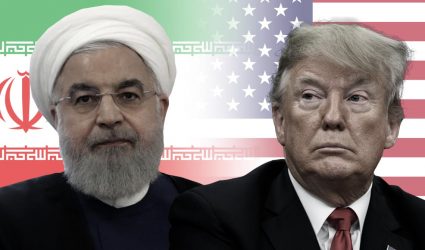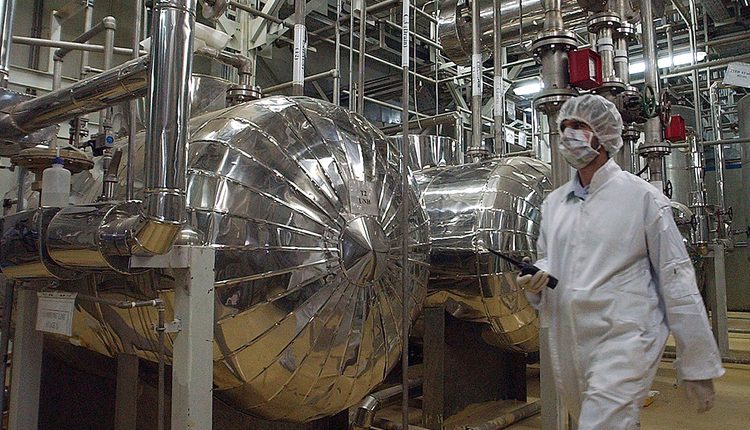A beginner’s guide to enriching uranium

Iran says it will begin enriching uranium beyond the 3.67 percent limit set in its 2015 nuclear deal with world powers.
(ALJAZEERA) – Iran has always insisted it pursued a peaceful nuclear programme, even as the United States and other countries suspected it might be developing nuclear weapons under the guise of a civilian programme.
Its economy has been languishing under the effects of increasingly severe international sanctions since the 1980s, but in 2015 a deal formally known as the Joint Comprehensive Plan of Action (JCPOA) was struck between Iran and world powers.
Under the landmark pact, Tehran would scale down its nuclear programme in exchange for limited sanctions relief, the resumption of oil and gas trading on the international market and the unfreezing of some $100bn of its assets held worldwide.
But that deal is now more fragile than ever.

In May last year, President Donald Trump unilaterally pulled the US out of the multinational deal and reimposed severe sanctions, which further crippled Iran’s economy and removed many of Tehran’s incentives for compliance.
The European signatories to the deal have since struggled to keep the JCPOA alive. Last week, France, Germany and the United Kingdom confirmed that a new financial mechanism designed to enable European and Iranian companies to trade without any direct financial flows – thus bypassing the US financial system – was operational.
But the workaround vehicle called INSTEX (Instrument in Support of Trade Exchanges) can only help European companies avoid US sanctions if they are sending humanitarian goods and aid products and services to Iran.
Without including oil in INSTEX, the Europeans’ solution is severely limited. Frustrated by the US reneging on the deal, and Europe’s apparent inability to stand up to Trump, Iran has declared it would abandon some of its commitments, too.
The deal had mandated that Iran only enrich uranium to 3.67 percent purity, but Iranian President Hassan Rouhani said this week they would enrich “to any amount we want”.
What is uranium?
Uranium is a silvery-grey metal, an element found in tiny amounts almost everywhere, but rarely in concentrated densities.
The World Nuclear Association says that uranium mines are operational in some 20 countries, though about half of global production comes from just 10 mines in six countries: Canada, Australia, Niger, Kazakhstan, Russia and Namibia.
Uranium is often mined though a form of “fracking”, or hydraulic fracturing, in which water injected with oxygen is forced at high pressure through rock containing uranium, extracting the element before pumping it to the surface.
The liquid is then filtered, and the dissolved uranium is removed from the water by a process known as ion exchange – a similar chemical process to that used in some household water filters to remove impurities.
When dried, the uranium oxide often takes on a bright yellow colour before being packed in drums, in what is known as “yellowcake”.
How to enrich it
The useful isotope of uranium is known as Uranium-235 – this is the type of uranium that can be adapted to fuel power stations or produce nuclear bombs.
U-235 is present in just about 0.7 percent of mined uranium ore, with the other 99.3 percent being Uranium-238 which has no direct contribution to generating electricity or explosives – so for any practical use, uranium’s purity needs to be upped.
Under the 2015 deal, Iran agreed to enrich uranium to no more than 3.67 percent, which is enough for power generation, but far below the 90 percent purity required to make a nuclear bomb.
Uranium needs to be in the form of a gas for the enrichment process, so the uranium oxide is subsequently converted into uranium hexafluoride.
“The main process used by most countries, including Iran, is spinning a uranium gas (uranium hexafluoride) in ‘cascades’ of large numbers of centrifuges,” Matthew Bunn, a nuclear policy expert and professor at Harvard Kennedy School, told Al Jazeera.
“The U-235 atoms are very slightly lighter than the U-238 atoms, and so it’s very slightly easier for the spinning of the centrifuge to bend the path of the molecules containing U-235 atoms.”
The useful enriched Uranium-235 is captured for fuel, and the Uranium-238 is regarded as a waste product.
What’s so special about 3.67 percent?
In the 1980s, Pressurised Water Reactors (PWRs) – a type of energy production reactor in which water is converted to steam by the heat generated by the process of nuclear fission – required uranium fuel to be enriched to around 3.7 percent purity.
“With 3.7 percent, you can burn for about a year before having to shut down your reactor for a month to refuel it,” said Professor John Luxat, the industrial research chair of nuclear safety analysis at McMaster University.
“With five percent, the target is to get two years or more from each fuel source,” he told Al Jazeera.
“It’s an economic consideration – the longer you can operate your plant, the more money you make.”
So 3.67 percent purity is considered the minimum needed in order to run reactors, though most modern reactors run on at least five percent.
“About 27 tonnes of fresh fuel is required each year by a 1,000 MWe nuclear reactor,” according to the World Nuclear Association.
“In contrast, a coal power station requires more than two and a half million tonnes of coal to produce as much electricity.”
Iran agreed under the JCPOA deal to limit its stockpile of 3.67 percent-enriched uranium to 300kg, a threshold it is now breaking after the most recent US sanctions stopped it from exporting what it created.
What does Iran want uranium for?
Iran has always said its nuclear programme was civilian and research-based, including for medical research.
“There are very few uses for uranium itself in medical applications,” Luxat said. “But it can be used, for example, to produce technetium, which is used widely in diagnostic imaging and treatment for certain types of cancer.”
The higher the purity of uranium, the more efficient the process of producing related elements, he added. Tehran was also looking to its research to provide a back-up plan.
“Iran’s uranium enrichment was for learning the nuclear cycle – so that when Iran has its own reactors, it can provide the fuel itself if other countries refused to,” Iranian journalist Hooman Majd told Al Jazeera.
“Iran increased to 20 percent enrichment to provide fuel for the rods for the Tehran research reactor, which creates medical isotopes.
“Ironically, the US proved Iran right that it needed its indigenous fuel cycle by refusing to sell Iran fuel for that reactor.”
This is what rang alarm bells. Uranium at anything less than 20 percent U-235 purity is considered “low-enrichment”.
Universities and research centres around the world are now restricted to enriching at below 20 percent, as part of anti-weapons proliferation efforts of recent decades.
At 20 percent purity, the uranium is considered potential proliferation material.
“Once you get to 20 percent, you can rearrange your centrifuges in such a way as to get up to very high enrichments, even 90 to 95 percent, very quickly,” Luxat said.
The “Little Boy” atomic bomb dropped on Hiroshima in 1945 contained uranium enriched to 80 percent. Only a kilogram of the stuff underwent nuclear fission. It killed tens of thousands of people instantly.
“Inspectors can quickly see how centrifuges are arranged, and therefore easily determine if attempts to reach weapons-grade material are being made,” Luxat said.
Under the 2015 nuclear deal, Iran agreed to inspections of its nuclear facilities.
“But with Trump throwing JCPOA out of the window, there are no more inspections, and we’re back to random visits from the International Atomic Energy Authority,” Luxat added.
What’s next?
Iran denies seeking to produce nuclear weapons and often refers to a religious decreeissued in 2003 by Supreme Leader Ayatollah Ali Khamenei that bans their development or use.
But Bunn, the Harvard professor, is not convinced.
“Iran’s claims that its nuclear programme has always been civilian are false,” he said.
“The Fordow enrichment facility, in particular, buried beneath a mountain to protect it from attack, was designed for about 3,000 centrifuges – perfect for a small nuclear weapons programme, but far too few to support a civilian power reactor.”
So what’s next? Iran has blamed Europe, in particular, for failing to live up to its promises and help the Iranian economy recover as US sanctions grip the country.
“I expect Europe will look to see what the reaction is in the US, to see if Trump backs up his threats with further shows of force,” said Mark Shanahan, head of the politics and international relations department at the University of Reading.
“The European Union tends to take its time a bit more on these matters, particularly at a time of transition between EU foreign policy representatives.”
Majd, the Iranian journalist, believes it’s too late for new talks.
“Iran’s government really had no choice but to show its people that it was doing something in the face of all the pressure being imposed on it,” he said.
“Unless there is some give on the part of Trump, which is always possible, especially if [US National Security Adviser John Bolton] is somewhat sidelined as he appears to have been on North Korea, then Iran might find a way to enter talks.
“But it won’t enter talks while being pressured daily, otherwise the sense is it has rewarded Trump for his policy – and what’s to say that sanction and pressure policy won’t be used again?”
For Shanahan, the entire diplomatic effort is at risk.
“This is a war of words that no-one wants to escalate – but this is Iran making a power-play and saying they’ll never kow-tow to Trump,” he said.
“Europe’s goal of bringing Iran into the JCPOA was as part of bringing Iran back into the global fold. Europe will tread carefully, but the more Iran pushes, the greater the chance of the whole thing collapsing.”

